The unripe tomato is largely consumed in Southern Mediterranean Countries. In some Countries, as Italy and Spain, the market is so well-established that it has became deeply differentiated.
Certainly, one of the liveliest markets in terms of types and volumes is Italy, where next to commodities (Round smooth big tomato and elongated tomato), added-value market segments have developed. The size of the market has been determined by the possibility to grow the product outside highly suitable areas, thus allowing the expansion of the production area.
For the products strongly linked to the production area, so as to be condition of the consumer purchase, the development of markets in terms of volume have been less significant.
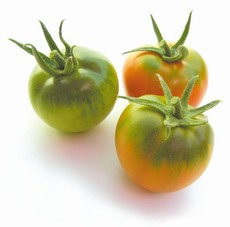 Photo on the right: Reginella F1, first variety of SAIS of the round small-sized tomato
Photo on the right: Reginella F1, first variety of SAIS of the round small-sized tomato
A symbolic case is round tomato, small-sized. This type of tomato has fruit medium-small-sized, green with dark marked shoulder, bright red at ripen. The pulp is crunch even at full ripen and the unique taste came from an excellent balance between acidity and brix.
The cultivation of this tomato began in coastal areas, such as Sardinia, Eastern Sicily, and Puglia, in particular in Salento, where the salinity of the irrigation water has created the conditions to reach very high levels of quality until obtaining an unique taste.
Obviously the varieties had to show a certain tolerance to salinity.
The cultivation of this added-value tomato gave an important opportunity to earn in places where the agronomic conditions limited the yielding of traditional types.
During the years agronomic elements, first of all virus diseases, and trend market have implicated more cost of cultivation and price decreasing.
In order to meet these new challenges, growers needed varieties with an intermediate resistance to TYLCV and more productive.
SAISs answer came with the YUP F1 variety. The tomato is medium-small sizing, dark green coloured, with marked shoulder, and with dark red colour at full ripening.
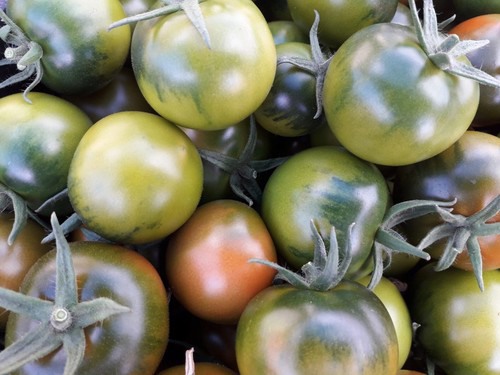 YUP F1
YUP F1
From the agronomic test, YUP resulted to be a suitable variety all over production areas and along all transplant periods.
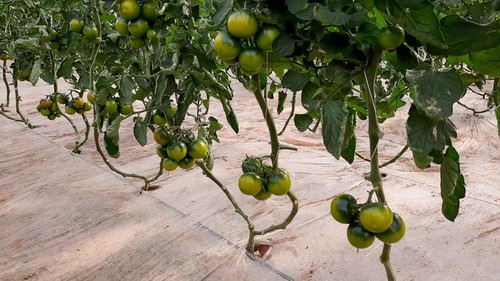 YUP F1: cultivation in Pachino (Sicily)
YUP F1: cultivation in Pachino (Sicily)
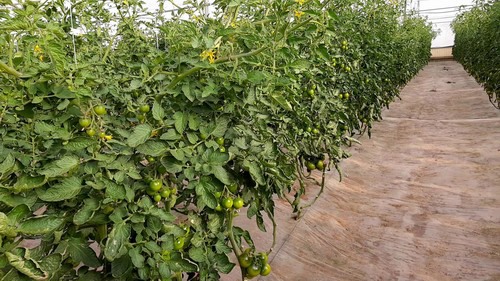 YUP F1: cultivation in Pachino (Sicily)
YUP F1: cultivation in Pachino (Sicily)
The growth of the plant is very regular so as well the development of the cluster, that brings 6 uniform fruits in almost all the agronomic conditions.
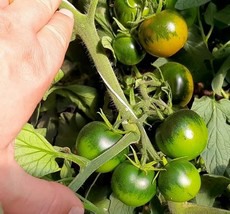
The fruit size is uniform, around 55-70 g (depending on the conductivity of the water), perfectly round, smooth with dark green colour and marked shoulder that persists to full ripening.
The tomato has dark red colour at full ripening.
Color and sizing of fruit do not change even in condition with low conductivity of the water.
For added-value products, SAIS put in place varietal characterization and shelf life test already in the early stages of the agronomic evaluation.
The aim of the test is to characterize the tomato product of the Yup F1 variety in the context of a shelf life test with laboratory analytical methods
The analysis and product evaluation have been performed in accordance with the specific marketing legislation n. 543/2011 with authorized methods for organoleptic, physicochemical, colorimetric parameters on at least 10 fruits. T1, T2, and T3 correspond, respectively, to the analysis dates +2 days, +7 days, and +14 days from the harvest. The samples have been stored in the fridge at 5°C all period test long. The storage conditions correspond to those observed on average in the shops.
Analysis has evaluated the product profile, physical-chemical profile and colorimetric profile.
In summary, the product profile has shown excellent characteristics in relation to the homogeneity of size and low weight loss rates. Good maintenance of the fruit turgor throughout the shelf life. No product defects.
The physical-chemical profile has stable and suitable values of brix, acidity, hardness and dry substance in relation to the type of product (in line with the market).
The colorimetric profile showed a skin color with a good brightness and a color variation of the fruits towards redder shade during the shelf life. The green color of the shoulder endures shelf life.
Parameters evaluated along the test:
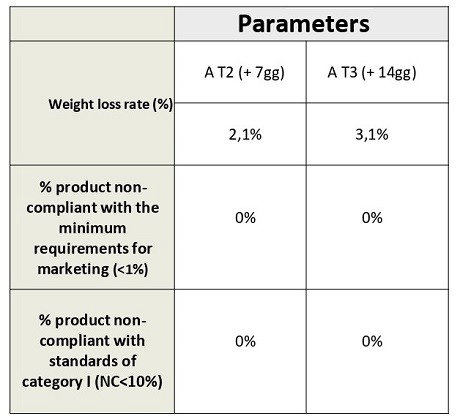
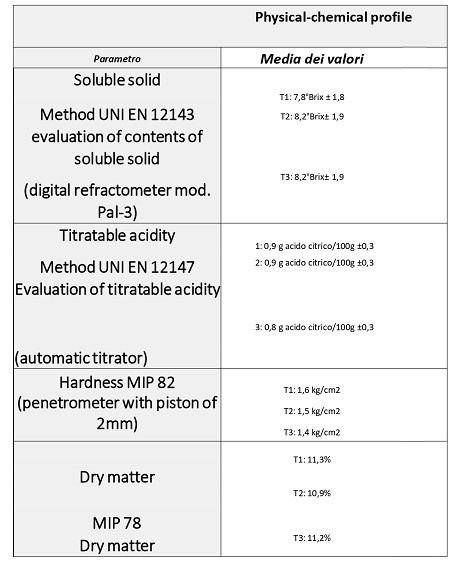
From the brix analysis, the product has a good soluble solids content already at T1, although the fruit was harvested not ripe. The values on average are higher in relation to the type of product. The values increase slightly over time. The acidity values are constant at T1 and T2, with a slight decrease at T3 while the hardness of the fruit, another important aspect for the qualitative perception of the product, does not undergo a real decline in the various phases and remains in line with expectations of the consumers. The registered dry matter has quite high values, stable over time.
The colorimetric profile:
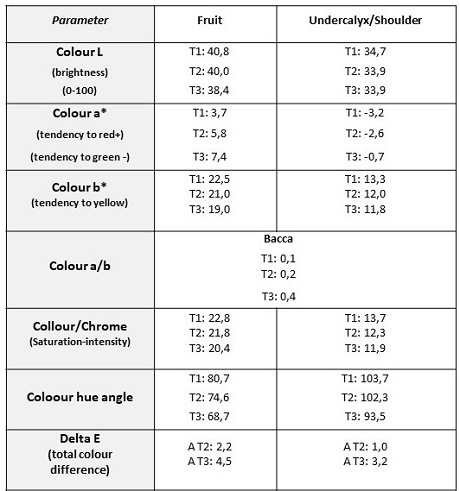
The colorimetric analysis show a decline of the intensity and brightness of the skin colour already at T2, as well as a change of colour key to red towards T3, even if this occurs more slowly at the shoulder level, producing the desired visual effect for the type of product.
In conclusion the work has shown that the YUP F1 variety has excellent quality characteristics not only at T1, but also along all evaluation, with the absence of qualitative defects on the fruits in all shelf life stage. The size is in line with the requirement of distribution standards. The weight of the tomato slight decreases during the shelf life. The product at T1 has a good quantity of soluble solids, considering the type of product and a relatively high quantity of dry matter. The hardness changes slightly, but the fruits do not show a real loss of firmness.
For further information, please contact our office or visit our website at: professionale.saissementi.it/prodotti/pomodoro-indet/insalataro-pomodoro-indet/111sa202-f1-new.
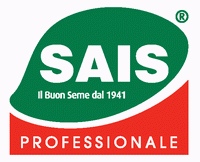 S.A.I.S. Sementi
S.A.I.S. Sementi
+39 0547 384250
info@saissementi.it
professionale.saissementi.it/en
You can also follow us by:
LinkedIn S.A.I.S. Sementi
Facebook @saissementi
